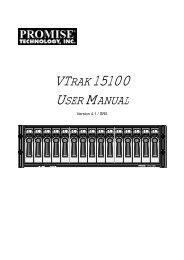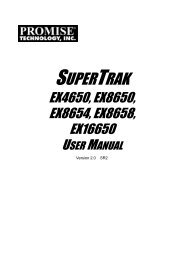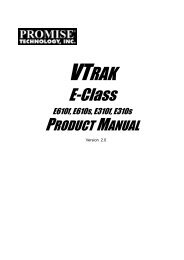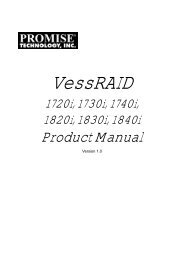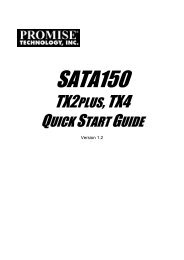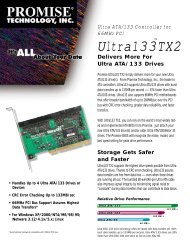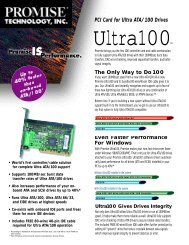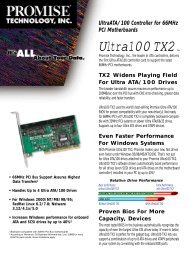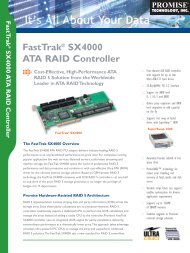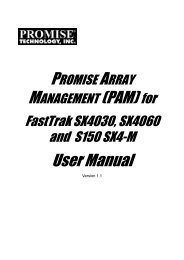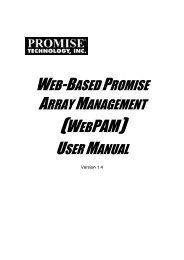WebPAM User v1.5 - Promise Technology, Inc.
WebPAM User v1.5 - Promise Technology, Inc.
WebPAM User v1.5 - Promise Technology, Inc.
Create successful ePaper yourself
Turn your PDF publications into a flip-book with our unique Google optimized e-Paper software.
3. Click on the Synchronization tab in Management View.<br />
4. Click on the Disable radio button.<br />
Logical Drive Initialization<br />
79<br />
Chapter 5: Monitor and Manage<br />
When logical drive is first created, you can select one of three choices for<br />
initialization:<br />
• Quick Initialization – Erases the reserve and master boot sectors of the<br />
physical drives being added to the logical drive.<br />
• Full Initialization – Erases all sectors of the physical drives being added to<br />
the logical drive.<br />
• None – No initialization. This choice is not recommended.<br />
When you select full initialization, the process takes some time, depending on the<br />
size of the physical drives selected for the logical drive. The Initialization tab<br />
enables you to pause the initialization process so that more of FastTrak's<br />
resources are available for other operations. When the other operations are<br />
done, you can resume the initialization of your new logical drive.<br />
1. Click on the Logical Drive View icon in Tree View.<br />
2. Click on the Logical Drive<br />
want to pause.<br />
icon of the logical drive whose initialization you<br />
3. Click on the Initialization tab in Management View.<br />
4. Click the Pause button.<br />
The initialization process stops.<br />
5. Click the Resume button.<br />
The initialization resumes from the point where you paused it.<br />
Logical Drive Activation<br />
This feature enables you to designate a hot plug-and-play logical drive. It will<br />
become available in a future release of the FastTrak Controller card.<br />
Logical Drive Critical / Offline<br />
A fault-tolerant logical drive—RAID 1, 5 or 10—goes critical when a disk drive is<br />
removed or fails. Due to the fault tolerance of the logical drive, the data is still<br />
available and online. However, once the logical drive goes critical, it has lost its<br />
fault tolerance and performance may be adversely affected.<br />
If the fault was caused by a failed disk drive that was removed, the drive must be<br />
replaced by another drive, either identical or larger, in order for the RAID system<br />
to rebuild and restore optimal configuration.





